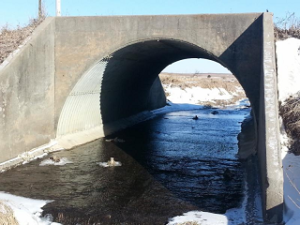Bridge engineers and managers are faced with the task of replacing or rehabilitating hundreds of thousands of bridges across the country.
FHWA reports nearly 170,000 functionally or structurally deficient bridges, of which more than half are the responsibility of local jurisdictions. One of the most economical choices for bridge replacement or bridge rehabilitation is corrugated steel pipe (CSP) and structural plate pipe systems.
CSP systems have many advantages over conventional bridges:
- Strength of steel
- Low cost
- Speed of installation
- Minimal maintenance
- Durability of coatings
- Environmental benefits
- Long service life
Strength of Steel
CSP and structural plate pipe systems have the advantage of the great strength of steel and the durability of coatings to provide the most efficient product. A variety of corrugation profiles can provide extreme fill heights, low minimum cover and spans over 50 feet.
Low Cost and Speed of Installation
CSP generally provides the lowest installed cost compared to other options, often less than half the cost of a typical bridge. This benefit is increased when you consider the fast installation times. Structures are installed in days and often without disruption.
Minimal Maintenance
Compared to typical bridge structures, CSP systems require significantly less maintenance. While periodic inspection may be required, there are no expensive bridge decks or bridge approaches to maintain.
Durability of Coatings and Service Life
CSP structures are available in a variety of coatings meeting nearly any service life requirement up to 100+ years. Galvanized, aluminized and polymer-coated CSP are just a few of the coating options. These and other coating options are addressed in the NCSPA Service Life Guide. Structural plate systems have a durable 3-ounce zinc coating and are often placed with natural streambeds. They can also be paved for additional abrasion and corrosion protection.
Environmental Benefits
Habitat protection and environmental enhancements are major benefits of using long span structures. Habitats are preserved by spanning the riparian zones and preserving or creating a natural streambed. Simply burying the invert can also provide an effective and economical biological enhancement. Additionally, fish passage enhancements can be incorporated in the structure.
